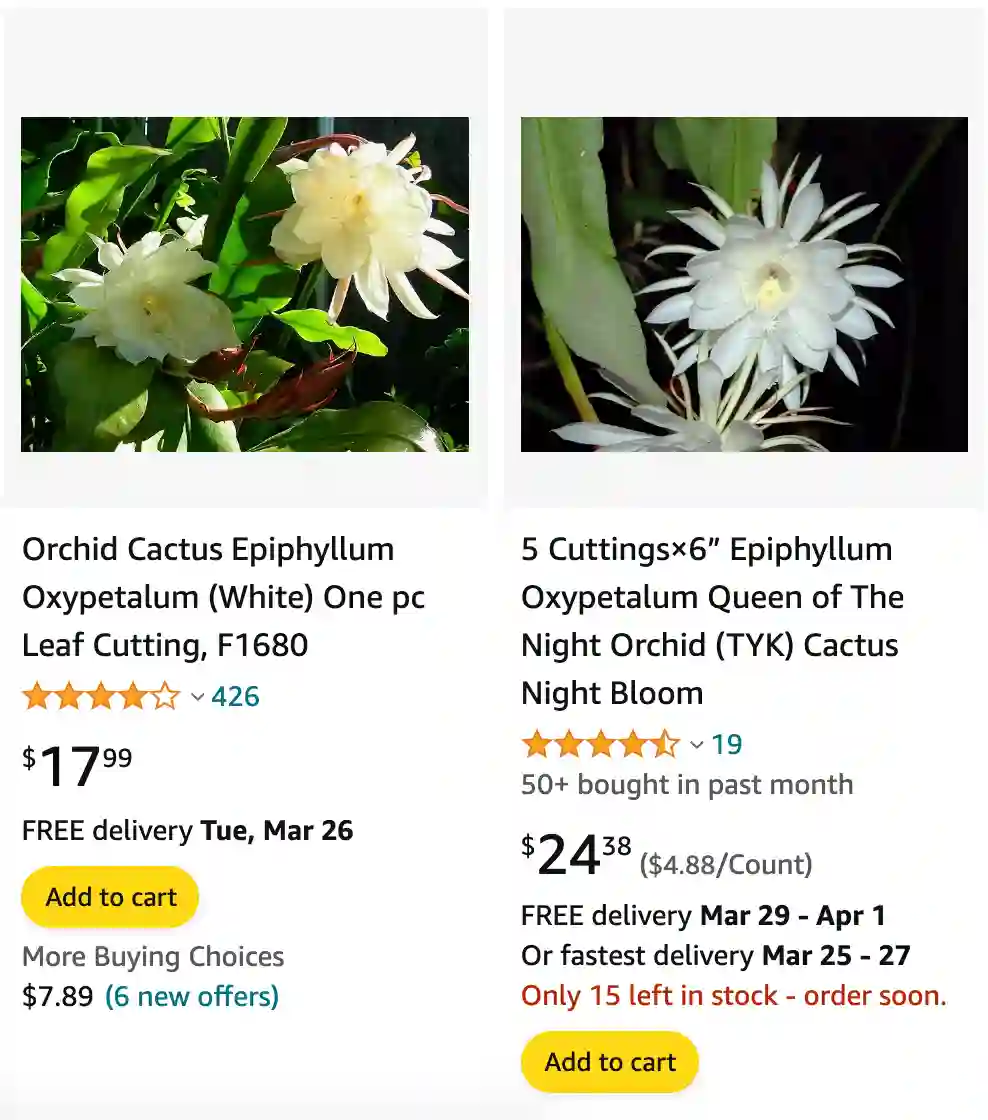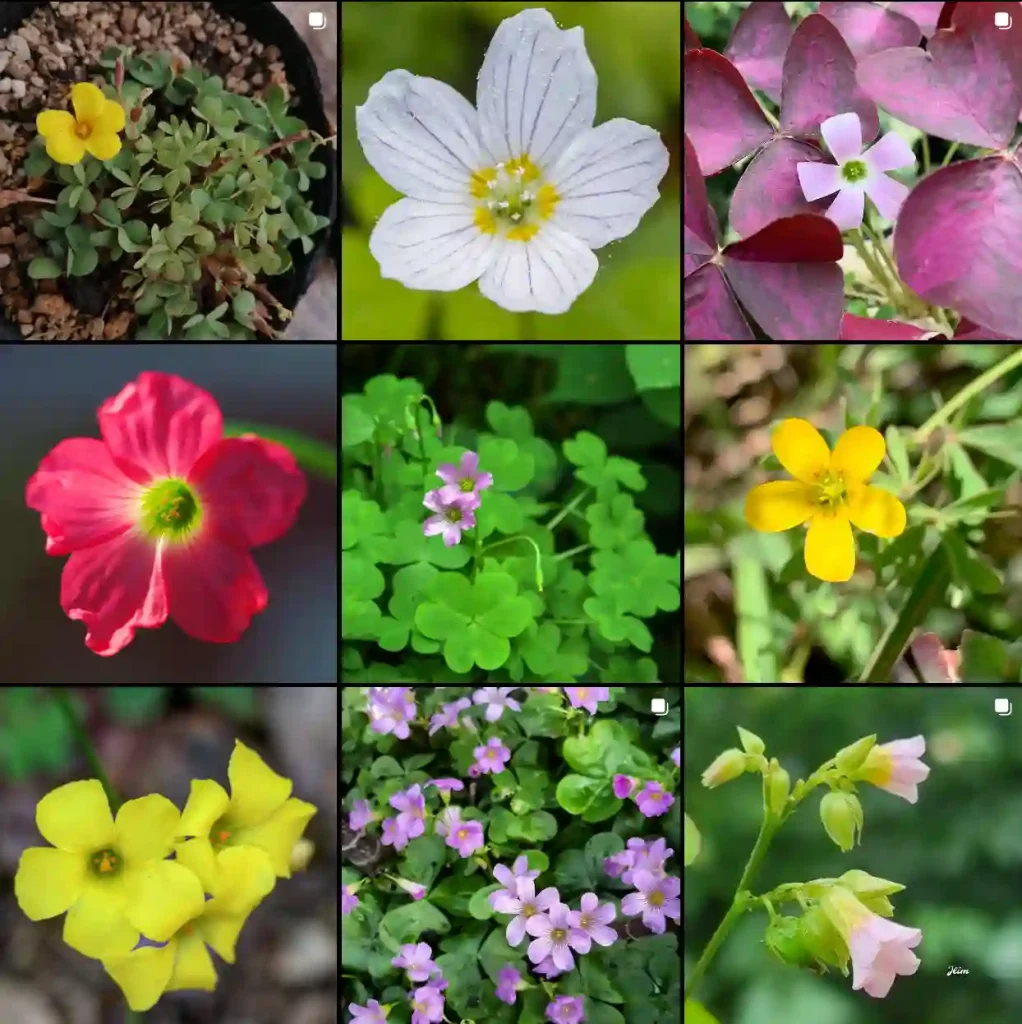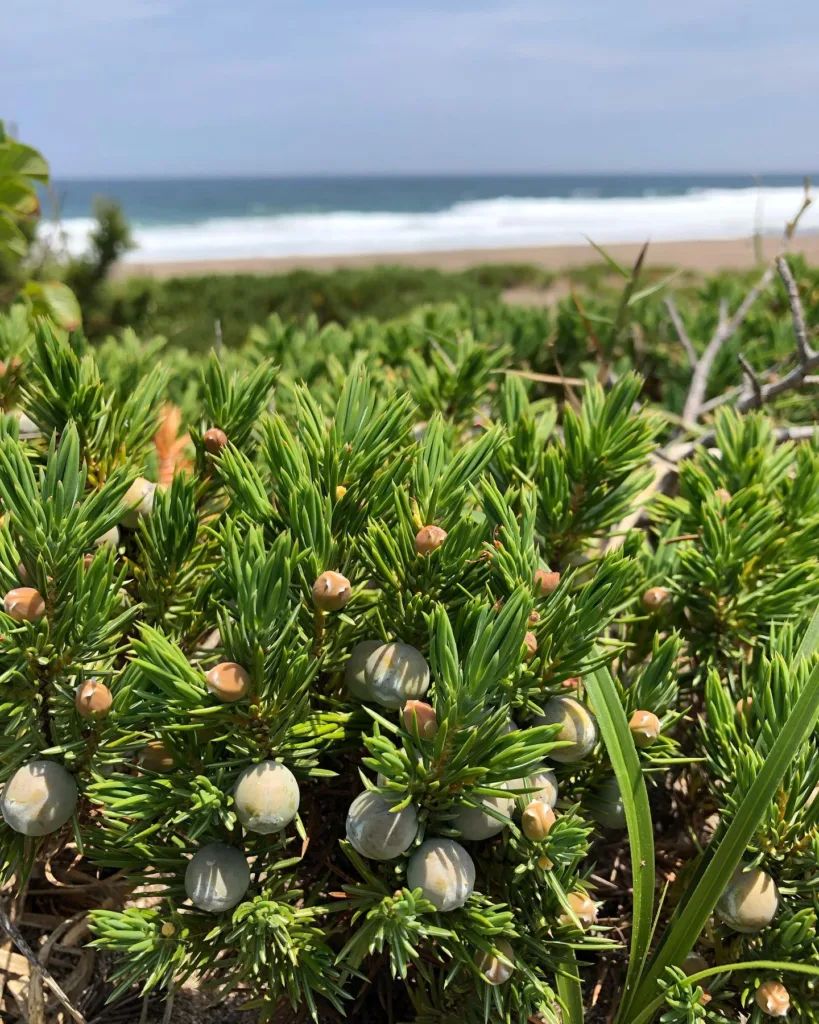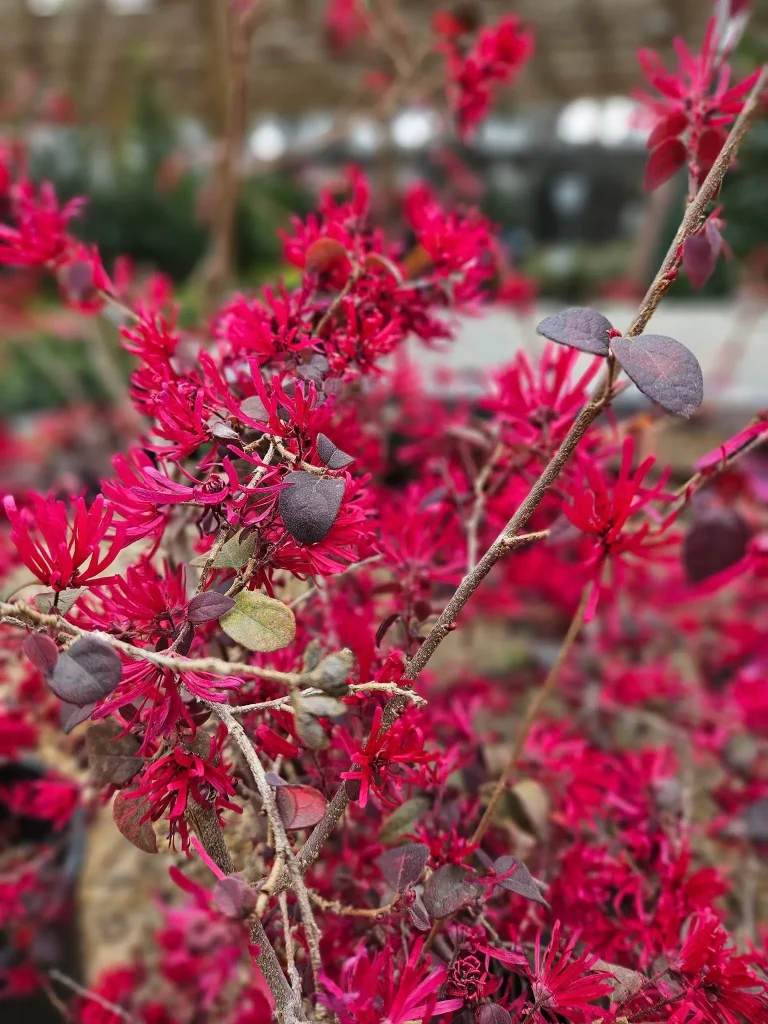
How to care for Epiphyllum oxypetalum?
Here’s a guide on caring for your Epiphyllum oxypetalum, also known as the night-blooming cereus:
10 Species in Genus Epiphyllum
Light:
- Contrary to most cacti, Epiphyllum oxypetalum prefers bright, indirect light. Think dappled sunlight filtering through leaves in its native rainforest habitat.
- East or west-facing windows are ideal. South-facing windows might be too harsh, especially during midday. You can use sheer curtains to diffuse strong sunlight.
Watering:
- Water your Epiphyllum oxypetalum thoroughly when the top inch of soil dries out. Unlike desert cacti, it enjoys slightly more moisture due to its rainforest origins.
- Avoid letting the soil dry out completely, but also ensure it drains well to prevent root rot.
Soil:
- Use a well-draining cactus or succulent mix for your Epiphyllum oxypetalum. You can add perlite or orchid bark for extra drainage.
Fertilizing:
- During the growing season (spring and summer), you can fertilize your Epiphyllum oxypetalum with a balanced fertilizer diluted to half strength once a month. Avoid fertilizing during fall and winter.
Temperature:
- Aim for warm temperatures between 65°F and 85°F (18°C and 30°C). Protect your plant from cold drafts and sudden temperature changes.
Blooming:
- Mature Epiphyllum oxypetalum can produce magnificent fragrant flowers in spring through mid-summer. To encourage blooming, provide some direct morning sunlight and keep the plant slightly root-bound.
Additional Tips:
- Epiphyllum oxypetalum is a climber in nature. You can train it to climb a moss pole or trellis for a unique look.
- Established plants can benefit from occasional misting, especially in dry climates.
- Avoid frequent repotting. Repot only when the roots outgrow the current container.
By following these tips, you can help your Epiphyllum oxypetalum thrive and reward you with its beautiful night-blooming flowers.
How to propagate Epiphyllum oxypetalum?
Propagating Epiphyllum oxypetalum is quite straightforward. I usually do this by taking stem cuttings. I cut a healthy segment of the stem, let it callus over for a few days, then plant it in a pot with a well-draining cactus mix. Keeping the soil lightly moist and the cutting in a bright, indirect light environment helps it root successfully. Within a few weeks, roots start to develop, and new growth appears.
Where to buy Epiphyllum oxypetalum?
You can buy Epiphyllum oxypetalum at various places including local nurseries, garden centers, or online plant shops. I’ve had good experiences purchasing from specialized cactus and succulent retailers online, as they often provide detailed care instructions and healthy plants.
How long does an Epiphyllum oxypetalum flower last?
An Epiphyllum oxypetalum flower typically lasts for just one night. The blooms usually open in the evening and wither by the following morning. It’s a fleeting but spectacular event that I always look forward to and try to capture on camera.
How to cook Epiphyllum oxypetalum?
Cooking Epiphyllum oxypetalum is not a common practice, as it is primarily grown for its ornamental and fragrant flowers rather than for culinary purposes. I haven’t come across any traditional recipes involving this plant, and it’s generally best appreciated for its beauty and scent.
How to know flower color of Epiphyllum oxypetalum?
The flower color of Epiphyllum oxypetalum is typically white. The large, fragrant blooms are renowned for their pristine white petals, which can be quite mesmerizing when they open at night.
Is Epiphyllum oxypetalum poisonous?
Epiphyllum oxypetalum is not considered poisonous. This makes it a safe choice for households with pets and children, as there’s no need to worry about accidental ingestion causing harm.
When do Epiphyllum oxypetalum bloom?
Epiphyllum oxypetalum usually blooms in the late spring to early summer. However, the exact timing can vary based on growing conditions and climate. I’ve found that providing the right care and environment encourages more frequent and reliable blooming.
Epiphyllum Oxypetalum vs Saussurea Obvallata
I find the Epiphyllum Oxypetalum mesmerizing with its large, fragrant blooms that bloom at night, creating a magical ambiance. Saussurea Obvallata, known as the Brahma Kamal, has delicate, snowy-white flowers that bloom in the Himalayan region, each blossom feels like a rare treasure in my garden.
Epiphyllum Oxypetalum vs Hookeri
Epiphyllum Oxypetalum, or Queen of the Night, is a personal favorite for its dramatic, nocturnal blooms that fill the air with a sweet fragrance. Hookeri’s flowers are more modest but still charming, making it a lovely addition for a subtler touch of beauty.
If i die, water my plants!



